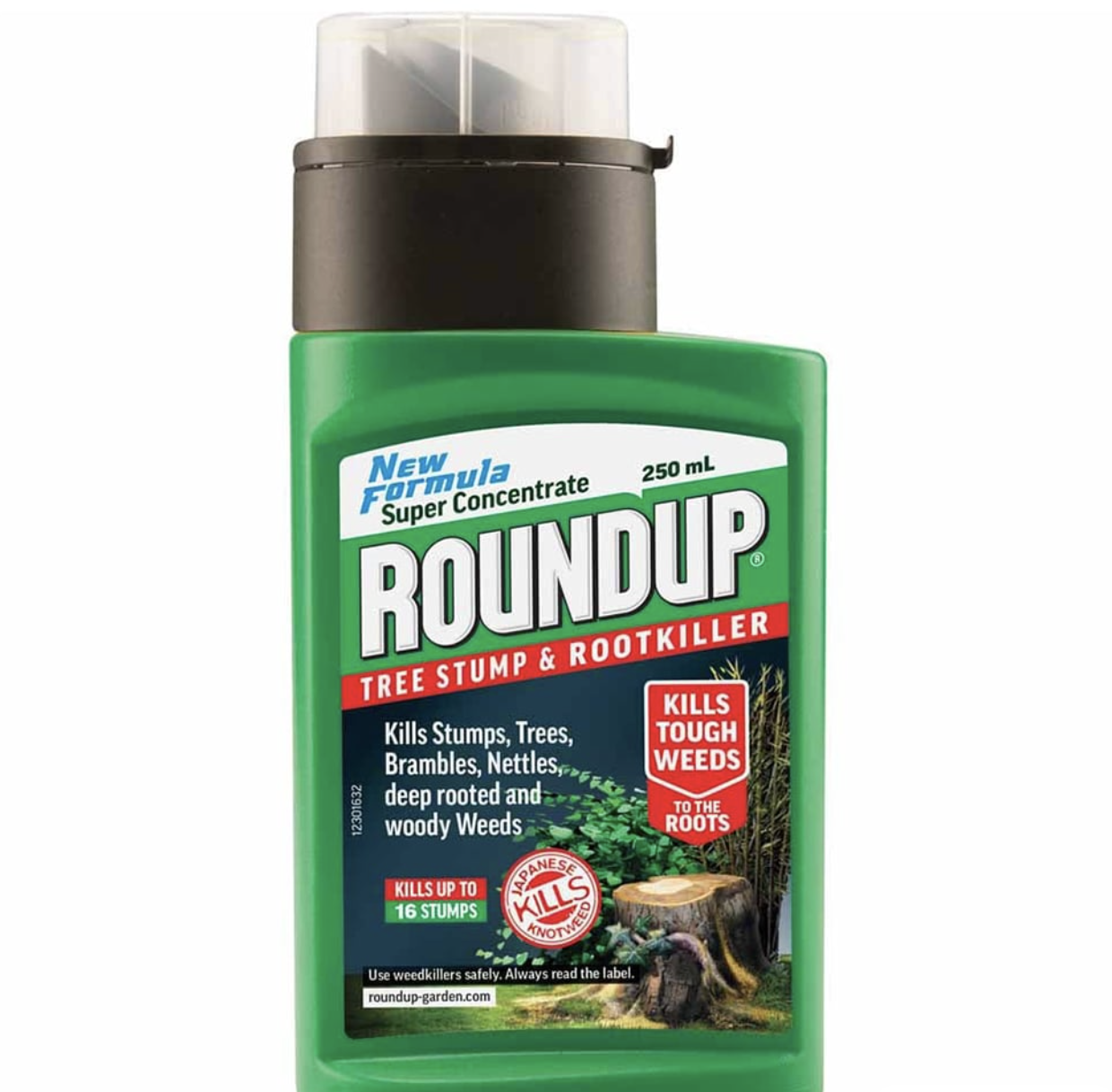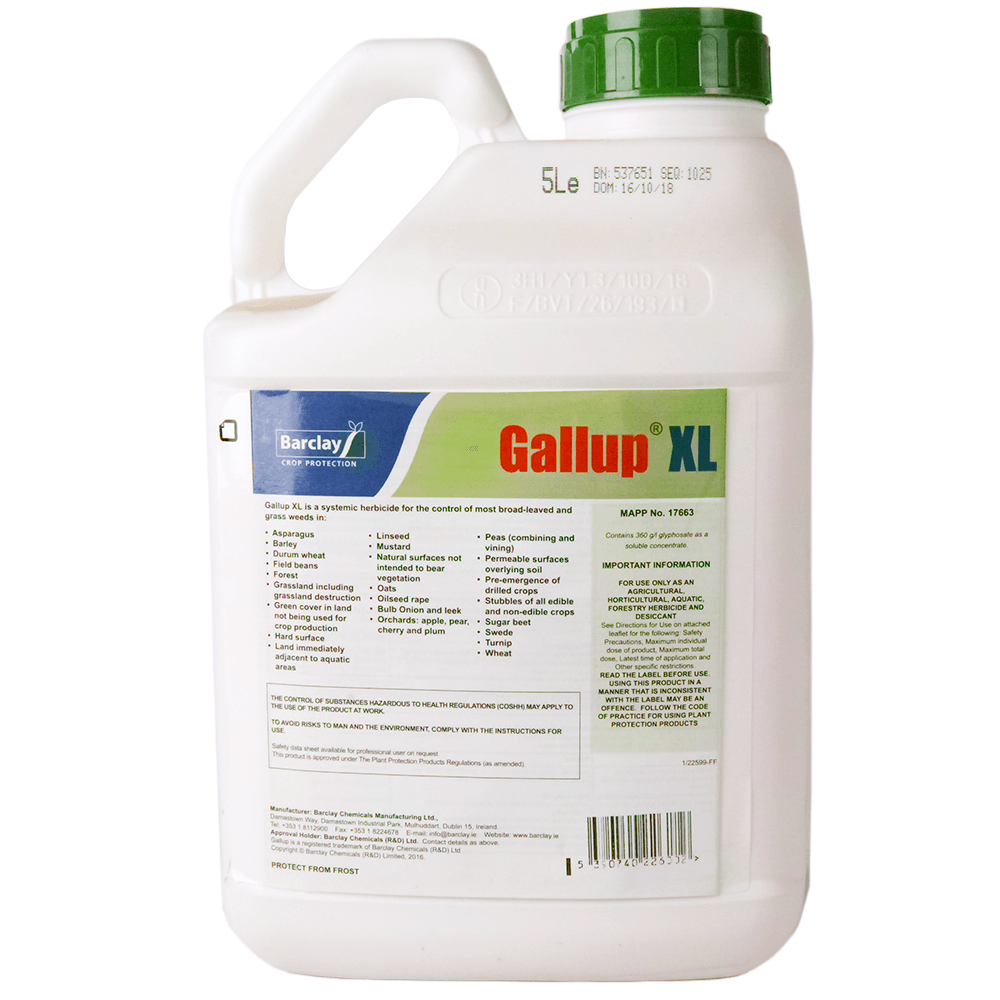How to kill tree roots to prevent damage to plumbing, foundations and paving
Avoid costly repairs to your structures when tree roots run out of control

As a homeowner, it's important to be aware of the damage that tree roots can cause if left unchecked. Not to mention the visual impact it can have on the appearance of your garden. Knowing how to kill tree roots can prevent you having to pay money down the line to fix any structural damage caused.
"Roots can grow into or under pavements, driveways, foundations, or plumbing, causing substantial damage to your home and garden landscaping. The root system may need to be removed if the roots are causing cracks in structures or causing them to lift," says garden maintenance expert at Allan's Gardeners, Jane Dobbs.
"The roots of trees can compete for water and nutrients with other plants in gardens and landscapes. Consider root removal if a tree's roots are affecting the health of other valuable plants. Cutting a tree down requires removing the roots (especially large ones) to keep it from growing back," says Jane.

Responsible for leading the gardening team at Allan's Gardeners, a landscaping and garden maintenance, business who do lawn care and installation. She has 10 years experience as a gardener.
Removing tree roots manually and with chemicals
Tree roots can become plants that damage your home but they don't always pose a risk. "You should remove tree roots when they begin to damage nearby structures, for instance, the roots may be blocking pipes and drains, or they may be affecting the foundations of buildings," says Graham Smith MClhort, a gardening expert from LBS Horticulture.
"You should not remove tree roots purely for aesthetic purposes, as if you are intending to keep the tree it can hurt or even eventually kill it," says Graham.
Before you start removing tree roots Graham recommends that you contact any relevant utility companies to ensure that you will not be digging too close to underground lines that supply your property or your neighbours.
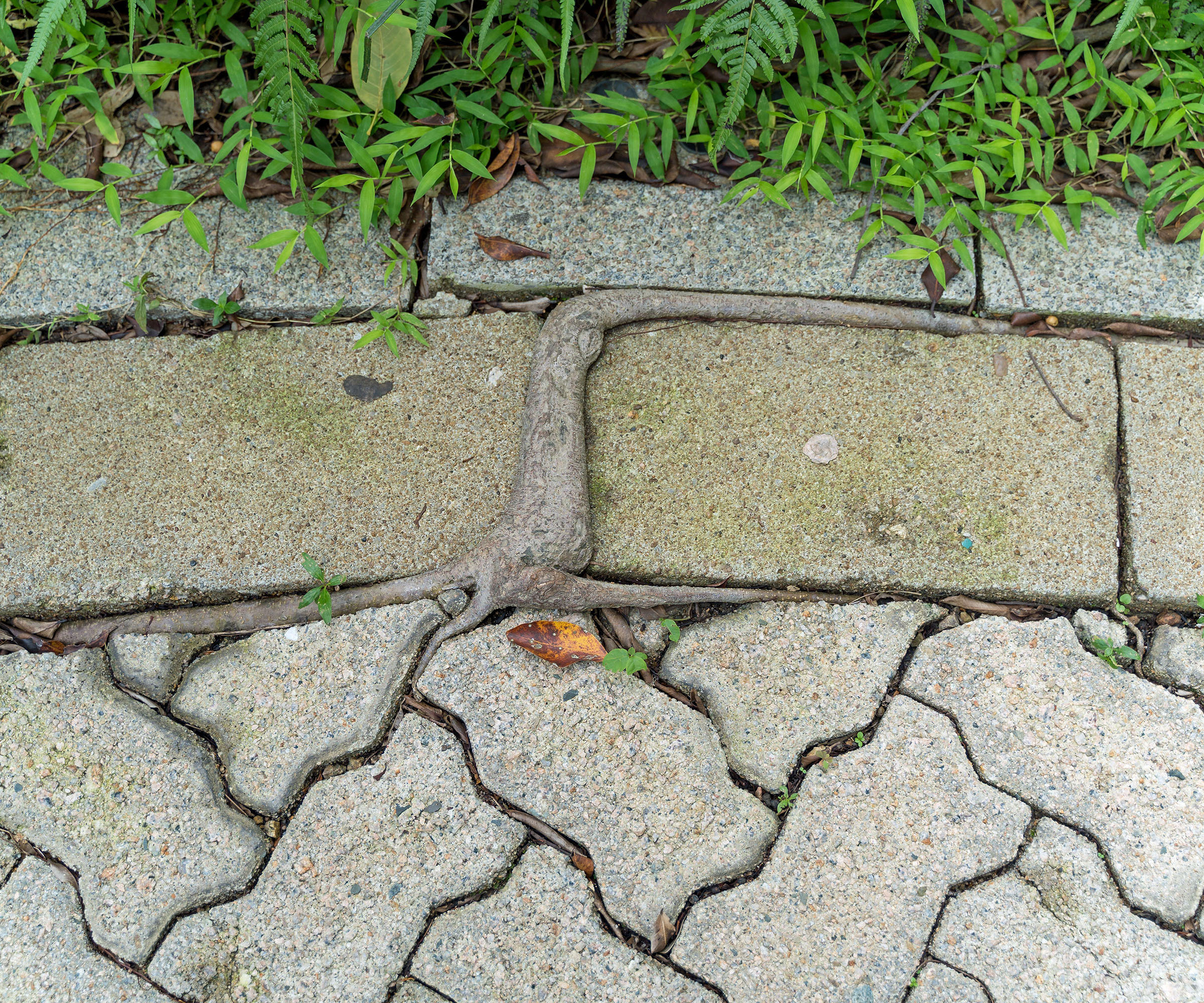
How to remove tree roots manually
"Be aware of the root's source and consider if it is connected to a living tree. You'll need to clear the area of any debris or vegetation around the roots. You'll have better access and visibility. The soil needs to be softened so water the area around the roots thoroughly. Then digging will be easier and plants won't get damaged," says Jane Dobbs.
She outlines her method below:
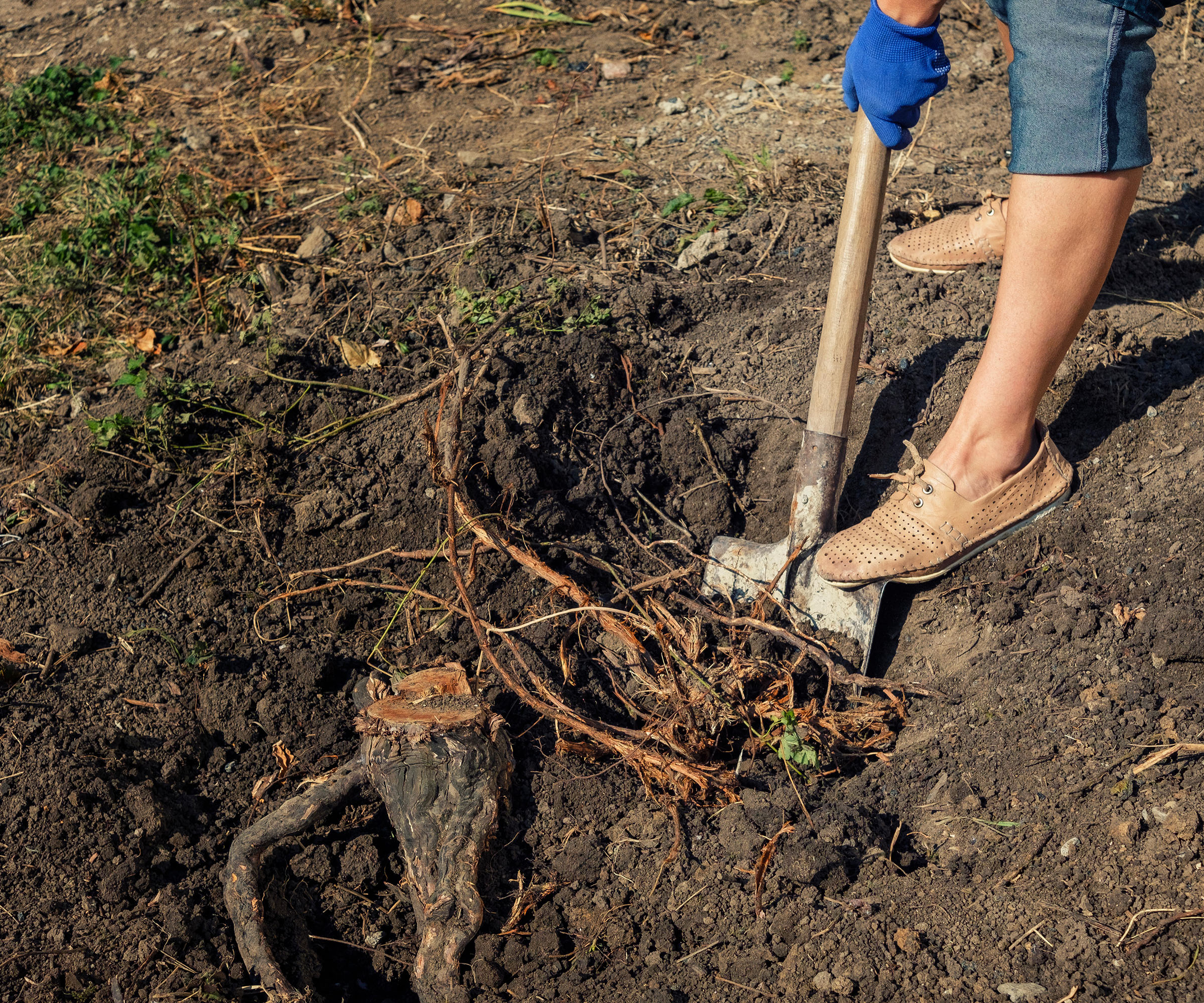
- There are risks of building by trees and to remove the roots you will need a shovel to dig a trench around them. You want to expose as much of the root as possible. If the roots are big, you might have to dig a little deeper and wider. When cutting small roots, use a pruning saw or root saw. You can use an axe, mattock, or chainsaw to remove larger roots. You can cut the root into manageable sections if it is very long. Try this Srendi® Heavy Duty Mattock 5lb Head and 36” Solid Wooden Handle at Amazon.
- Use a crowbar to lever the root sections out of the ground after cutting. There may be smaller roots that need to be cut as well. If the roots are very stubborn or deep, you might need to dig deeper or use a winch or come-along winch to remove them. Use a winch to apply steady pressure to the root with a chain or rope.
- After the roots have been removed, fill the hole with the soil you dug out or add new soil if necessary. Make sure it is firmly tamped down to prevent it from settling.
Shop tree root killer
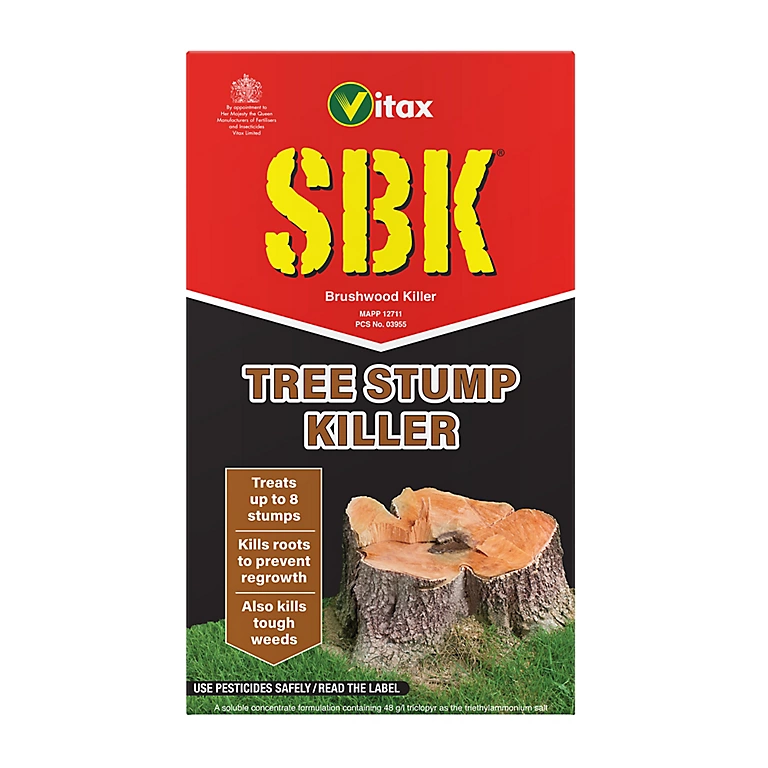
This can be sprayed or painted on tree stumps and roots to kill them. It also works for other weeds but it won't kill surrounding grass.
How to remove tree roots with chemicals
There are a variety of chemicals which can be used to kill tree roots. Be advised that the RHS don't support the use of weed and stump killers because of the damage that can be caused to wildlife and other plants. They aren't suitable for organic gardens either.
However, they recognise that stubborn tree roots and stumps which are causing damage need to be removed, and regulated weedkillers will do the job. Graham Smith MClhort shares his steps for using chemicals to kill tree roots below, but be aware that specific products will have their own set of instructions:
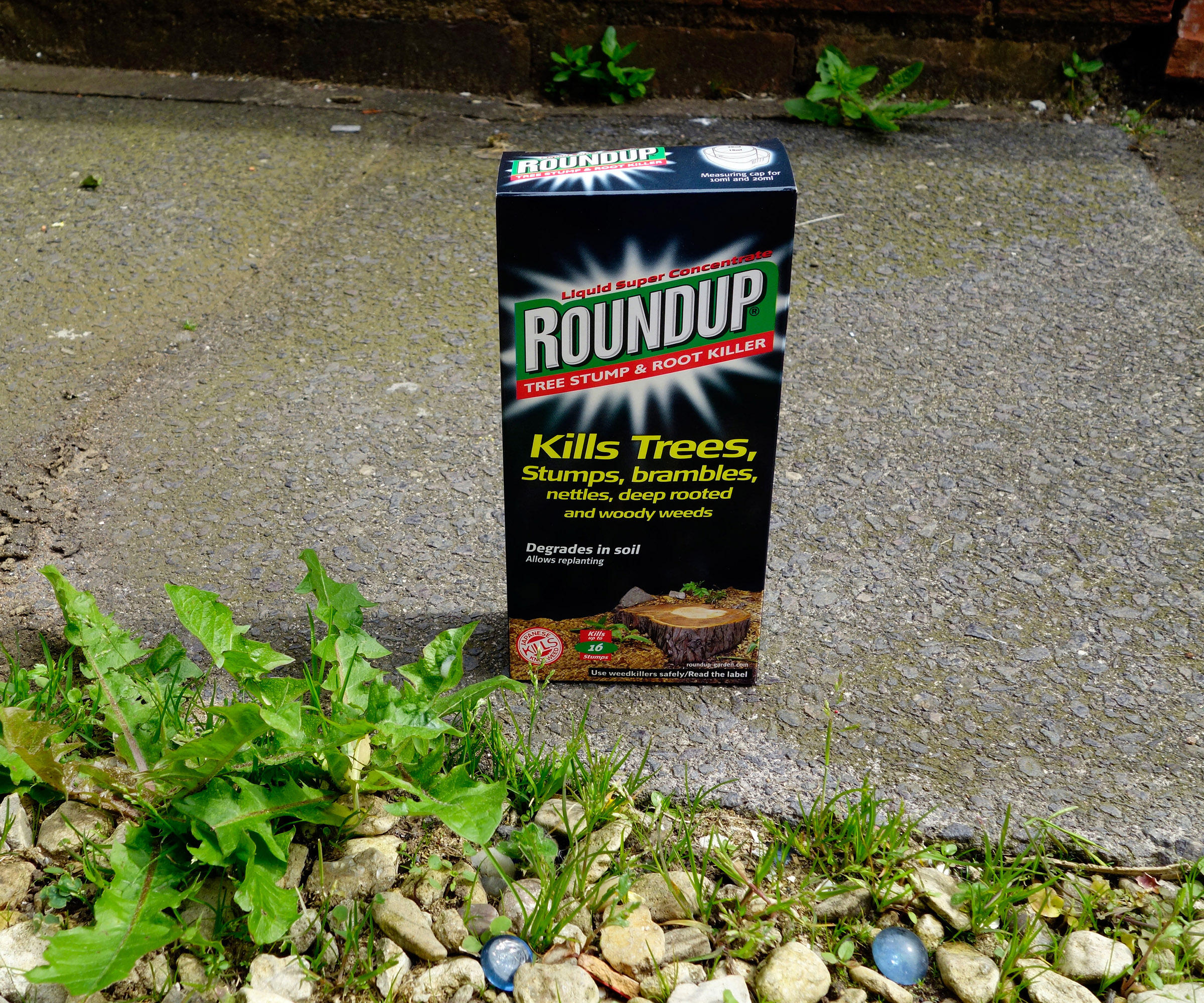
- Use a saw to make a fresh cut across the stump of the tree. Saturate the outer layer of the tree (just behind the bark) with water. This will help to distribute the herbicide into the roots of the tree.
- Mix a glyphosate herbicide with water to create a 50/50 solution, and use a garden sprayer to saturate the outer ring of the tree stump. Avoid getting the solution onto any nearby plants or grass.
- Once the treatment has been applied, it should take around two weeks for the tree roots to die off.

Graham has extensive knowledge in the horticultural and gardening industries, and prides himself on using this to help gardeners of all skills create their perfect outdoor space.
FAQs
Will bleach kill tree roots?
"Pouring large amounts of bleach on a tree root will kill it, but it is not recommended to do this as it can harm nearby plants and surrounding soil. There is also a chance that the bleach will not penetrate deep enough to kill the roots, and will only cause surface damage," says horticultural expert Graham Smith MCIhort.
What kills tree roots quickly?
It takes a combination of chemical and mechanical methods to kill tree roots fast. Garden maintenance expert Jane Dobbs recommends using a glyphosate-based herbicide directly on the stump.
"It works best when applied right after you cut the tree. Herbicides such as triclopyr are also effective, especially on woody plants. In the same way as glyphosate, apply it. Drill several holes in the stump and large exposed roots," says Jane Dobbs.
"Ideally, the holes should be 20-25 cm. Fill the holes with glyphosate or triclopyr or with salt solution (rock salt or Epsom salt mixed with water. Put a plastic bag over the stump to keep the solution in place and smooth the roots," says Jane.
What can you put on tree roots to kill them?
"As well as using a chemical herbicide, you can also use rock salt or Epsom salt. This method can take several months to show results, and you should apply the salt carefully as it can remain in the soil and damage the ecosystem," says horticultural expert Graham Smith MClhort.
As well as being tricky to remove, there may be certain restrictions around removing trees, root and stump. Have a look at our guide to cutting down trees: the rules and regulations.
Get the Homebuilding & Renovating Newsletter
Bring your dream home to life with expert advice, how to guides and design inspiration. Sign up for our newsletter and get two free tickets to a Homebuilding & Renovating Show near you.

Teresa was part of a team that launched Easy Gardens in 2018 and worked as the Editor on this magazine. She has extensive experience writing and editing content on gardens and landscaping on brands such as Homes & Gardens, Country Homes & Interiors and Living Etc magazine. She has developed close working relationships with top landscape architects and leading industry experts, and has been exposed to an array of rich content and expertise.
In 2020 Teresa bought her first home. She and her partner worked alongside architects and builders to transform the downstairs area of her two bedroom Victorian house in north London into a usable space for her family. Along the way she learned the stresses, woes and joys of home renovation, and is now looking to her next project, landscaping the back garden.
